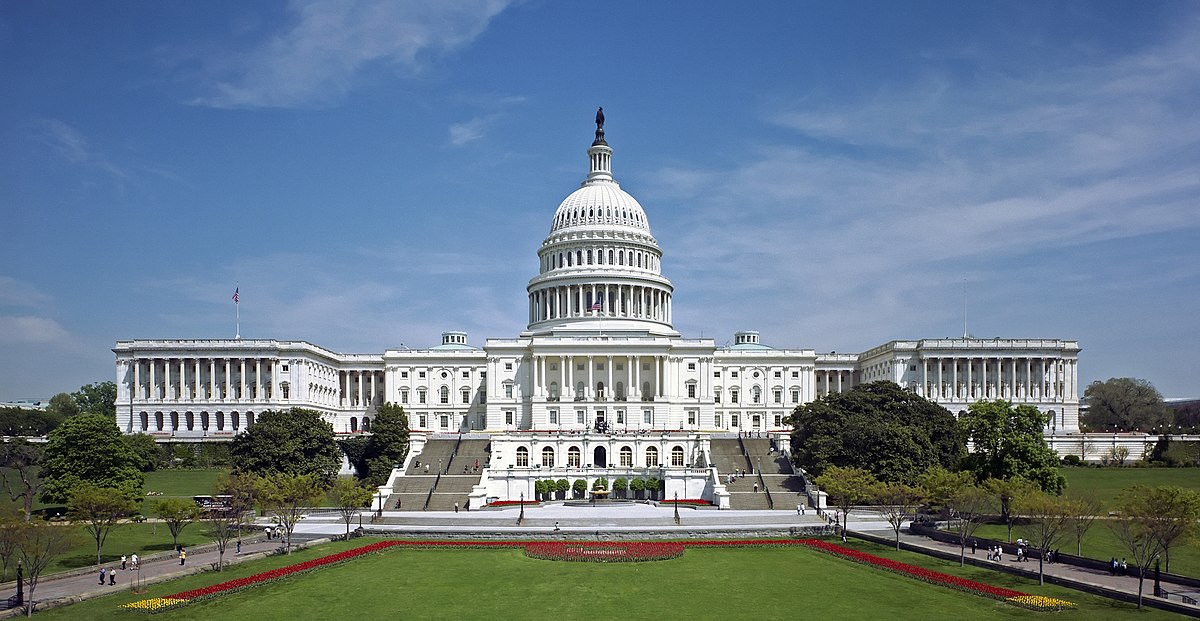
America Now Spends More on Debt Interest Than Defense as National Debt Hits $37 Trillion
America's $37 Trillion Reckoning: When Interest Payments Eclipse Defense Spending
WASHINGTON — Today, as markets opened to another week of uncertainty, the U.S. Treasury Department quietly recorded a milestone that will reshape American fiscal policy for generations: the national debt had crossed $37 trillion for the first time in the nation's history.

The number—$37.004 trillion in gross federal debt—represents more than a statistical curiosity. It marks the moment when decades of structural imbalances, pandemic-era spending, and demographic pressures converged into a fiscal reality that now consumes more government resources than national defense. For the first time in modern history, the United States spends more servicing its debt than protecting its borders.
This transformation didn't happen overnight. What took over 200 years to accumulate—the first trillion dollars of debt reached in 1981—now grows by that same amount every five months. The acceleration is breathtaking and, according to fiscal experts, fundamentally unsustainable.
The exponential growth of the U.S. national debt over the past several decades.
| Year | National Debt (in Trillions of U.S. Dollars) |
|---|---|
| 2000 | $5.67 |
| 2010 | $13.56 |
| 2020 | $26.95 |
| 2023 | $34.00 |
| August 2025 | $37.00 |
"The problem isn't last month; it's the next 30 years," noted one senior economist who requested anonymity due to the sensitive nature of fiscal discussions. "Aging demographics and health care costs represent the primary engine driving us toward a fiscal cliff that politics has been unwilling to address."
The Mathematics of Fiscal Gravity
The raw numbers paint a stark portrait of America's fiscal trajectory. At 119% of gross domestic product, the debt now exceeds the entire productive capacity of the American economy. More troubling for policymakers, net interest payments have reached approximately $846 billion annually—surpassing the $719 billion allocated to the Department of Defense in the current fiscal year.
A comparison of U.S. federal outlays for net interest payments versus national defense spending, showing the recent crossover.
| Fiscal Year | National Defense | Net Interest Payments |
|---|---|---|
| 2024 | $873.5 billion | $879.9 billion |
| 2023 | $820.3 billion | $659 billion |
| 2022 | $751 billion | $475 billion |
| 2020 | $714 billion | $345 billion |
This represents a fundamental shift in federal priorities, driven not by policy choices but by mathematical inevitability. Every month, the Treasury must service obligations that compound faster than economic growth can reasonably accommodate.
The debt's velocity has stunned even seasoned fiscal observers. Pre-pandemic projections suggested this milestone wouldn't arrive until after 2030. Instead, successive waves of emergency spending, tax policy adjustments, and structural demographic pressures compressed that timeline by half a decade.
Treasury issuance data reveals the mechanics behind this acceleration: the federal government has maintained a bill share of approximately 21% while steadily increasing coupon supply across the yield curve. With the Federal Reserve no longer serving as the primary buyer of Treasury securities—having reduced monthly runoff to just $5 billion—private markets must absorb this supply at increasingly expensive rates.
When Arithmetic Becomes Politics
The human consequences of this fiscal trajectory extend far beyond Washington's budget debates. Interest payments now function as what analysts describe as "an automatic stabilizer in reverse"—crowding out investments in infrastructure, education, and research that historically drove American competitiveness.
State and local governments, dependent on federal transfers for critical services, face the prospect of reduced funding streams as interest obligations consume larger portions of the federal budget. The ripple effects touch every aspect of public investment, from highway maintenance to university research grants.
Private markets feel the pressure through elevated borrowing costs. The term premium—the additional yield investors demand for holding longer-duration Treasury securities—has rebuilt from near-zero levels to approximately 0.6-0.8%, representing a structural headwind for corporate investment and household financing.
A term premium is the additional compensation investors require for the risk of holding a long-term bond compared to a series of shorter-term bonds. This extra yield is meant to offset the increased uncertainty over a longer time horizon, such as unexpected changes in interest rates or inflation.
"We're witnessing the emergence of a debt-service economy," observed one portfolio manager specializing in fixed-income markets. "Interest payments don't build bridges or fund research. They simply service past decisions, creating a fiscal drag that compounds over time."
The Demographic Destiny
Underlying these immediate pressures lies an inexorable demographic reality. Social Security and Medicare, scaled to serve an aging population, face trust fund depletion dates around 2033. Without intervention, these programs will require either dramatic benefit cuts or substantial tax increases—both politically challenging prospects.

The mathematics are unforgiving. Health care cost inflation, combined with demographic shifts, creates spending pressures that dwarf traditional budget categories. Even aggressive tariff policies, which generated approximately $136 billion in customs receipts through July, represent merely 7% of the annual deficit trajectory.
Projected U.S. federal spending on Social Security and Medicare as a percentage of the economy (GDP).
| Year | Social Security Spending (% of GDP) | Federal Health Care Spending (including Medicare) (% of GDP) | Combined Spending (% of GDP) |
|---|---|---|---|
| 2025 | 5.2% | 5.8% | 11.0% |
| 2035 | 6.0% | 6.7% | 12.7% |
| 2050 | 5.8% | Not Specified | Not Specified |
| 2098 | 6.7% | Not Specified | Not Specified |
Current projections suggest that extending expiring provisions of the 2017 Tax Cuts and Jobs Act would add approximately $4-4.5 trillion to deficits over the next decade. The fiscal space for such policies has evaporated as interest costs consume resources once available for policy flexibility.
Market Implications and Investment Positioning
For institutional investors and sophisticated market participants, this fiscal trajectory creates both risks and opportunities across asset classes. The structural shift toward elevated term premiums suggests a regime change that will persist regardless of Federal Reserve policy adjustments.
Fixed-income markets face particular pressure from persistent coupon supply meeting reduced price-insensitive demand. Auction dynamics have become more sensitive to foreign participation and dealer balance sheet capacity, creating periodic volatility around Treasury refunding operations.
Equity markets confront a higher discount rate environment that particularly challenges long-duration growth stories. Credit markets must price refinancing risk against a backdrop of structurally higher borrowing costs, compressing the cushion available for lower-quality issuers.
Strategic positioning may favor:
- Steepening trades that benefit from supply-driven term premium expansion
- Treasury Inflation-Protected Securities as fiscal looseness maintains inflation risk premiums
- Short-duration, high-quality credit over long-duration investment-grade exposure
- Gold as a hedge against fiscal dominance scenarios
Treasury Inflation-Protected Securities (TIPS) are government bonds designed to help protect investors from inflation. The principal value of a TIPS bond increases with inflation, as measured by the Consumer Price Index (CPI). This adjustment ensures that both the interest payments and the final principal payment maintain their purchasing power over time.
Currency implications suggest gradual dollar erosion over multi-year horizons as twin deficit dynamics pressure external balance, though near-term safe-haven demand may provide temporary support.
The Path Forward
Resolution requires addressing structural drivers rather than cyclical adjustments. Healthcare cost controls, entitlement solvency packages, and revenue base broadening represent the primary policy levers capable of altering the debt trajectory meaningfully.
Early action would allow gradual adjustments rather than market-forced fiscal consolidation. Delaying reform until trust fund depletion dates approach would necessitate more dramatic benefit cuts or tax increases, creating economic and political instability.

"The earlier we trade political pain for arithmetic progress, the less likely we are to face a market-forced fiscal event," noted one policy analyst familiar with Congressional budget discussions.
The $37 trillion milestone thus represents not an endpoint but a warning. America's fiscal challenges require solutions proportional to their structural nature—comprehensive reforms addressing the intersection of demographics, healthcare costs, and revenue adequacy.
For investors and policymakers alike, the question is no longer whether fiscal adjustment will occur, but whether it will be managed proactively or imposed by market forces. The arithmetic of compound interest suggests time is not on an America's side.
Investment decisions should consider individual circumstances and professional guidance. Past performance does not guarantee future results.